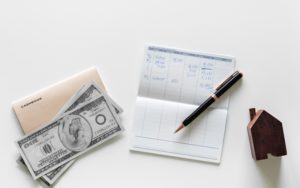
A homebuyers’ journey takes many stages during the course of their life. From renting to owning, the characteristics of homebuyers change, and Liberty Street Economics and the Federal Reserve Bank of New York outline some of those characteristics in a recent report.
Successfully transitioning from renting to becoming a homeowner depends on a consumer’s ability to manage the financial obligations involved purchase a house, as well as the creditworthiness of the buyers themselves.
At the outset of the millennium, average mortgage balances for first-time and repeat buyers were similar, with the average mortgage balance being $128,000 for first-time buyers and $152,000 for repeat buyers. Rising home prices during the housing bubble increased mortgages for repeat buyers more than for first-time buyers.
From 2003–2006, the average mortgage balance for repeat buyers increased by $68,000, or 13% annually. First-time buyers saw their average mortgage balance increased by just 8%, or $33,000.
According to the report, from 2000–2016, the average mortgage balance for first-time homebuyers rose by 84% compared to 92% for repeat buyers.
Another important factor is the buyer’s credit score. The average credit score for repeat buyers in 2000 was 705, slightly higher than the credit score for first-time buyers (670). After seeing a bump to 683 during the years 2003–2006, first-time buyers eventually saw their average credit score fall to 673.
Credit scores for both first-time and repeat buyers would increase beginning in 2007. This trend continued until 2013 when the average credit score reached 717 for first-time buyers and 757 for repeat buyers. The spread between the average credit score of first-time and repeat buyers is just 37 points.
One area of growing concern is student loan debt, and in 2000 there was essentially no difference in the size of loans from first-time to repeat buyers. The average rate was around $14,000 for both first-time and repeat buyers. The average student loan debt grew faster for repeat buyers than first-time buyers from 2003–2010, and by 2010 the gap between the two buyers reached $11,000.
As of 2016, the average student loan debt for first-time buyers had reached $29,000, compared to $42,000 for repeat buyers.
Liberty Street Economics reported that any of the above factors could impact the decision of when people are ready to buy a home. In 2000, the average age of the first-time buyer was 37.9 years old, compared to 44.7 years old for repeat buyers. The report added that the average age of the first-time buyer fell over the next few years, dropping to 35.4 years old (but increased to 47.5 years old for repeat buyers).
The average age of first-time buyers in 2016 fell to 32, while the average age of repeat buyers rose to 46.
The final characteristic—average ZIP code income—remained relatively unchanged between 2000–2016. The average ZIP code income for first-time buyers remains around $58,000, while repeat buyers’ average ZIP code income is around $67,000.

 theMReport.com Your trusted source for mortgage banking news
theMReport.com Your trusted source for mortgage banking news








